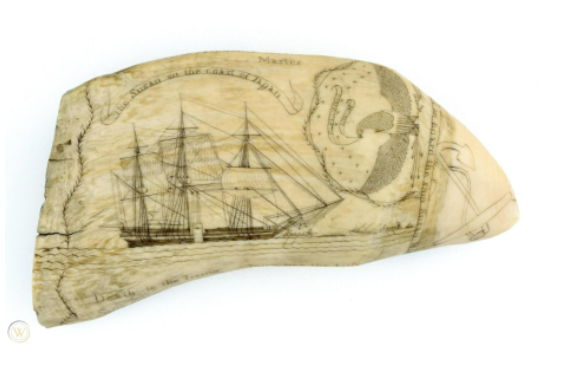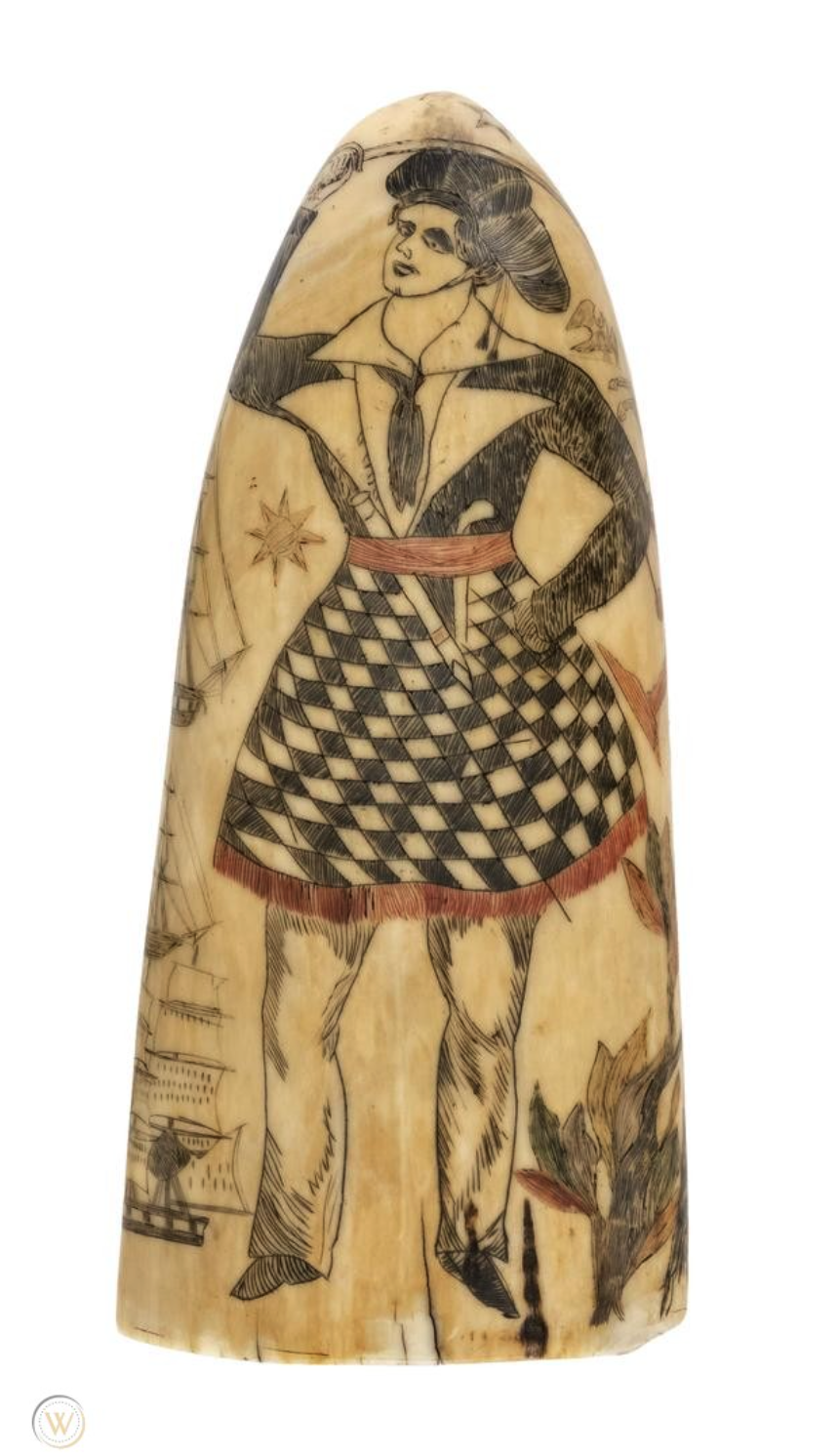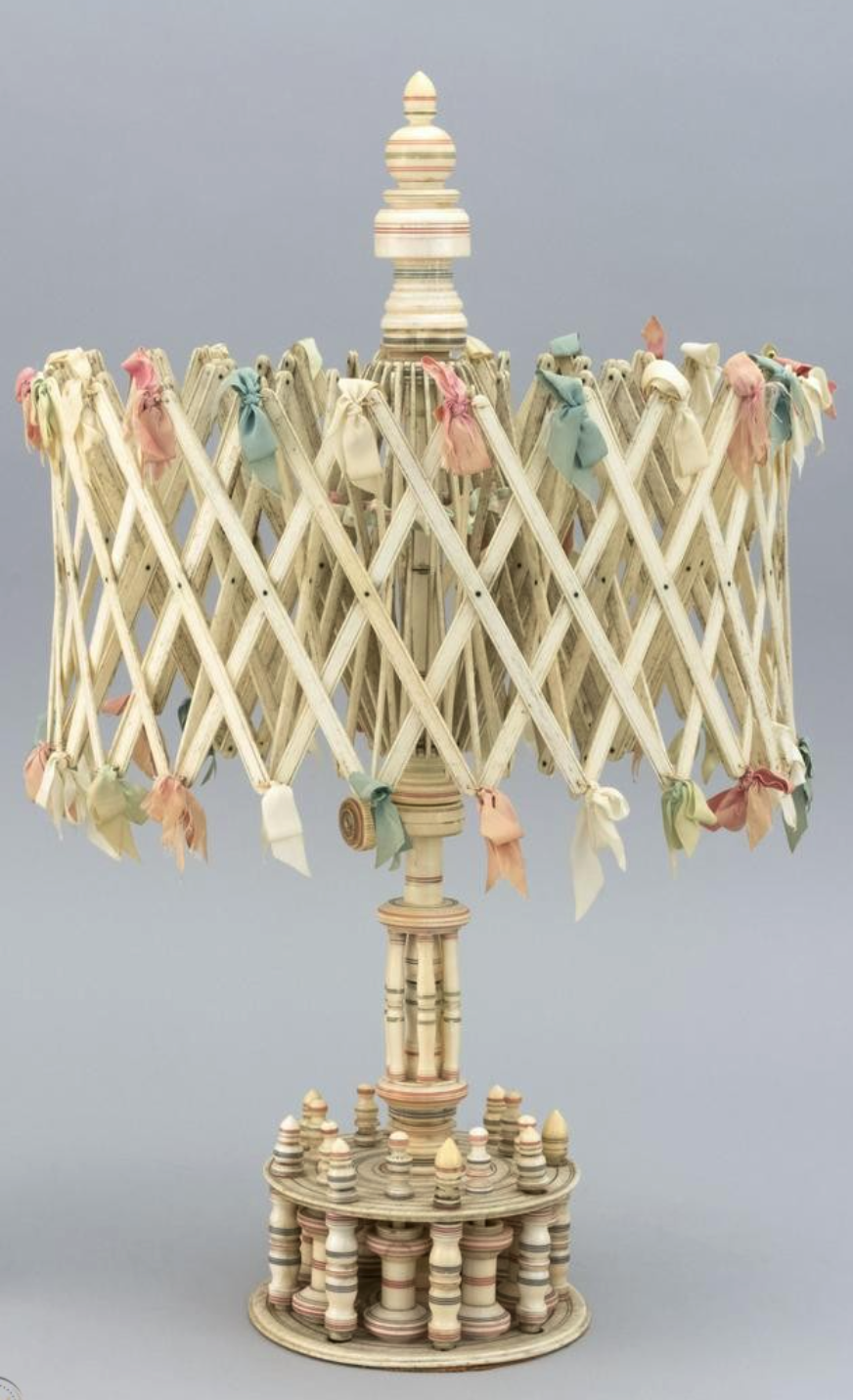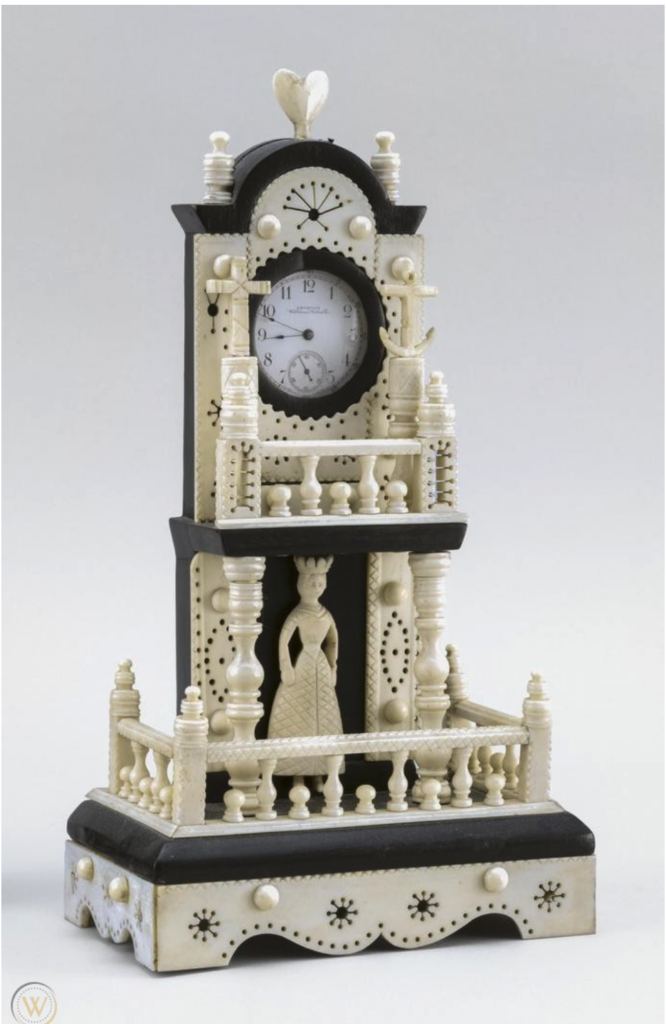
The New Bedford Whaling Museum on the south coast of Massachusetts houses the world’s most extensive scrimshaw collection, providing a safe home for exemplary examples of this defunct craft.
Origins of Scrimshaw
Scrimshaw is known for being the craft of 19th-century whalers, with the golden age in the 1830s and 1840s. The word “scrimshaw” is a traditional English surname dating back to the 12th-century and derived from the “escremisseor,” the Old French word for “fencing-master.” Herman Melville spelled it “skrimshaw” in his seminal work Moby-Dick; or, The Whale. He described it as “sketches of whales and whaling-scenes, graven by the fishermen themselves on Sperm Whale-teeth, or ladies’ busks wrought out of the Right Whale-bone, and other like skrimshander articles….” Whalers took up the craft in the late 18th-century to pass the time on long voyages, just as they made sailors’ valentines. Whalers used a needle and lampblack to carve intricate designs onto the bone and teeth of whales such as sperm whales. Completed scrimshaw was brought home as a memento of the journey at sea or as a gift for family members.
It is usually impossible to identify the scrimshaw artist as most pieces were not signed. However, Edward Burdett b. 1805 was America’s first scrimshaw artist, with Frederick Myrick b. 1808 being the most renowned. Artists continued practicing scrimshaw on whale bones until the decline of the whaling industry. However, engraving on walrus tusks persisted for a time. Today, contemporary scrimshaw artists continue the craft on more sustainable materials like seashells or cow horns.

Scrimshaw Gallery at the New Bedford Whaling Museum
Just as the New Bedford Whaling Museum is easy to miss on a New England museum tour, the Museum’s Scrimshaw Gallery is tucked down a corridor and easy to pass by. The New Bedford Whaling Museum is a treasure and not often visited since it is just south of tourist destination Boston, but it is worth the trip. Upon visiting the Museum, you may become distracted by the Lagoda, the largest ship model in the world, taking up several floors of the main gallery, or the massive whale skeleton. However, be sure to meander down the halls to seek out the Scrimshaw Gallery. Redesigned in 2012, the Scrimshaw Gallery contains large well-lit display cases chock full of objects running the gamut of the history of scrimshaw. The New Bedford Whaling Museum rather quietly boasts the world’s largest and most comprehensive scrimshaw collection.
The Scrimshaw Gallery showcases everything from mundane domestic scrimshaw pie crimpers to wonderfully elaborate watch hutches. Very early examples of crafting with bone and ivory date back to medieval Norway’s Viking era and the 17th-century Dutch Golden Age. Some objects are made of whale baleen, the flexible keratin plates found in whale mouths. Baleen is easy to make into items like umbrella ribs, skirt hoops, and corset busks. As Ishmael describes in Moby-Dick, “In most cases this lower jaw—being easily unhinged by a practiced artist—is disengaged and hoisted on deck for the purpose of extracting the ivory teeth, and furnishing a supply of that hard white whalebone with which the fishermen fashion all sorts of curious articles including canes, umbrellasticks, and handles to riding-whips.” In particular, a corset busk or stiffener served as an intimate gift for a whaler’s wife. The busk would be inserted into the wife’s corset and held close as a reminder of his love even while he was at sea.
Some of the Gallery’s larger objects include a whalebone birdcage and one of many scrimshaw swifts in the Museum’s collection. Scrimshaw made for display includes watch stands or sewing caddies. Scrimshaw canes generally have a bone handle with a wooden shaft. The provenance of many objects on display can be traced back to New Bedford’s Port District. The Museum also addresses “fakeshaw,” factory-made objects usually made of plastic to copy the scrimshaw art.

Scrimshaw Today
Today, buying and selling scrimshaw is a precarious activity. Some sales are restricted by the Endangered Species Act, Marine Mammal Protection Act, and other national and international regulations and laws. Contemporary scrimshaw artists use sustainable materials in practicing the craft, with several websites available with eco-friendly advice. However, collectors must take care not to purchase objects made of obviously illegal material, such as elephant ivory. Reputable auction houses are your best bet instead of eBay and their ilk. You do not want to acquire contraband accidentally. If you are interested in the art of scrimshaw, it is safe to start by taking another read of Melville’s classic Moby-Dick. Then, make a trip to visit the world-class collection at the New Bedford Whaling Museum.

Amy Moyer is the proprietor of Antmuffin: Art, Antiques & Collectibles (www.antmuffin.com). She holds a B.A. in Visual Art from Brown University and lives in Boston.
WorthPoint—Discover. Value. Preserve.
The post Scrimshaw: The World’s Largest Collection at the New Bedford Whaling Museum appeared first on WorthPoint.
